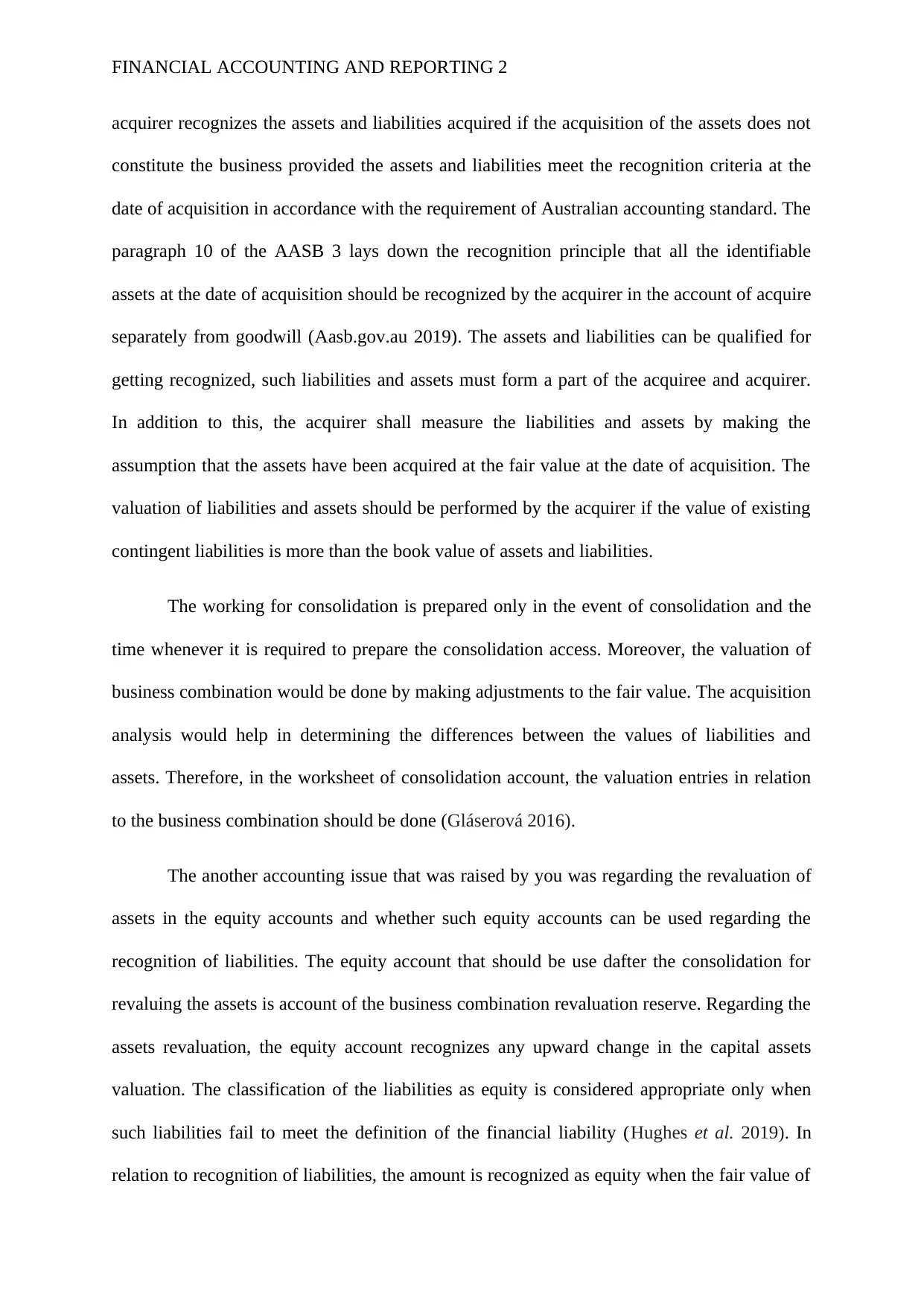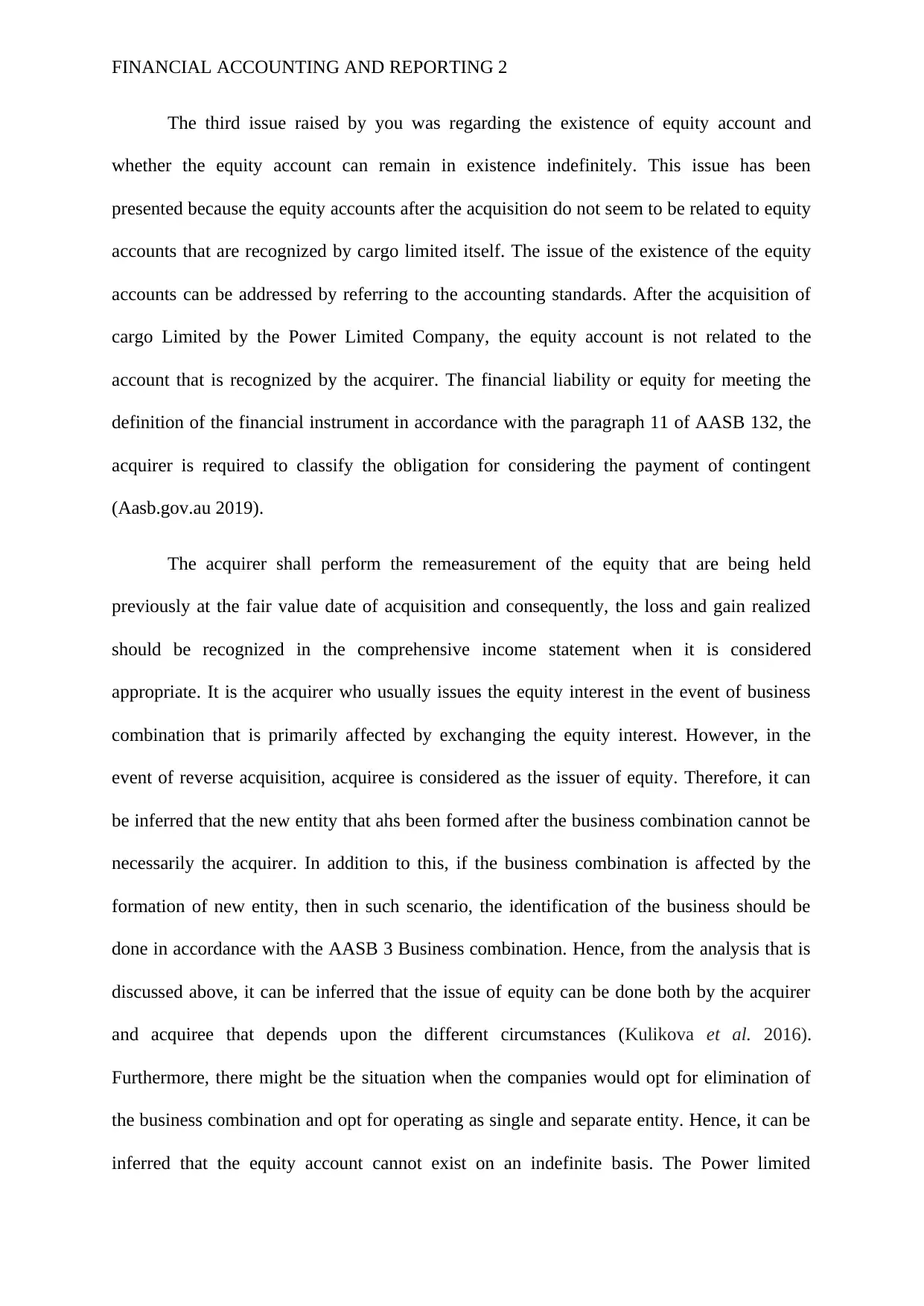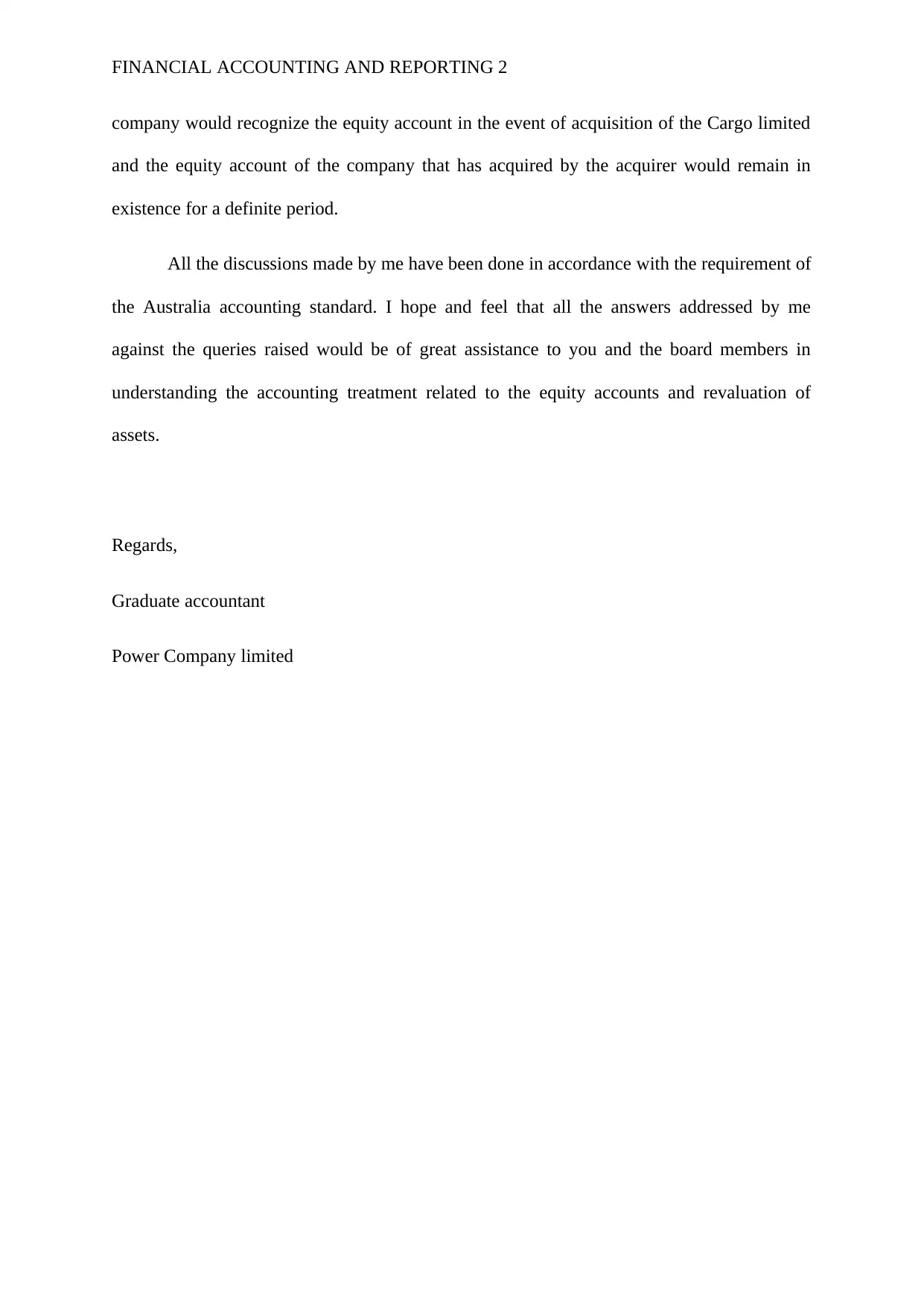Accounting Treatment for Assets, Liabilities, and Equity in Business Combination
VerifiedAI Summary
This memorandum addresses the accounting issues related to the acquisition of Cargo Limited by Power Limited, specifically regarding the adjustment of assets and liabilities at fair value and the existence of equity accounts. The Australian accounting standard board's recognition principles and valuation methods are explained to provide clarity on these issues. The memorandum also discusses the revaluation of assets in equity accounts and the recognition of liabilities. The conclusion highlights that equity accounts can exist for a definite period after a business combination. Overall, this memorandum provides a comprehensive understanding of the accounting treatment for assets, liabilities, and equity in business combinations.
![[object Object]](/_next/static/media/star-bottom.7253800d.svg)
![[object Object]](/_next/static/media/star-bottom.7253800d.svg)






